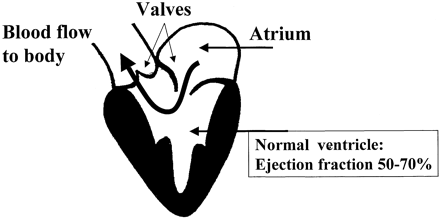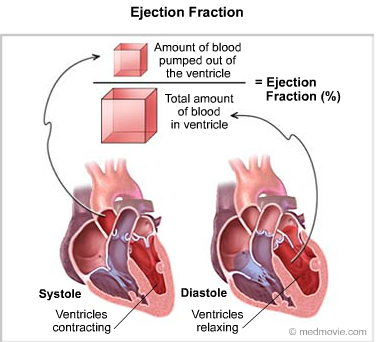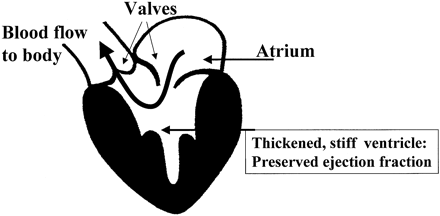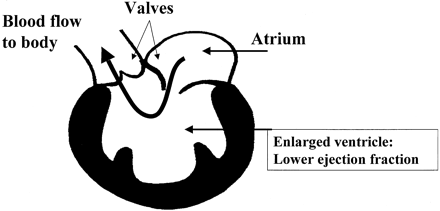Ejection Fraction
Contents
The Ejection Fraction (EF), an important measure of heart function, is the percentage of blood pumped out by the heart with each beat. About 60% of the blood in the heart is “ejected” out to the body with each contraction of the heart muscle. The normal heart has strength far beyond what we need every day. Even when the ejection fraction is low, the heart can often pump well enough to make tusual activities possible.
Systolic Heart Failure
Other procedures, such as radionuclide, magnetic resonance, or computed tomography imaging and cardiac catheterization with angiography may be done to identify the cause of heart failure. Rarely, a biopsy of heart muscle is needed, usually when doctors suspect infiltration of the heart (as occurs in amyloidosis) or myocarditis due to a bacterial, viral, or other infection.
Ejection Fraction Numbers
- 50-75% — Heart’s pumping ability is Normal
- 36-49% — Heart’s pumping ability is Below Normal
- 35% & Below — Heart’s pumping ability is Low
A Low EF
A low EF number is an early sign of heart failure. This is a condition where the heart doesn’t pump enough blood to the rest of the body. With treatment, many people live well with heart failure. So if you have a low EF, it is important that you recognize the signs of heart failure, which may include:
- fatigue
- shortness of breath
- Cough with exercise or lying down
- swelling in the feet
- Difficulty breathing when lying dow
- Loss of appetite and abdominal discomfort
- Weight gain due to fluid retention
A low EF can also cause an irregular heartbeat, which can make your heart stop pumping effectively.





Comments 4
I have a pacemaker installed and I am 70 years old and want to if I can do weights. It’s been three months of my pacemaker installed.
i think in your images you have systolic and diastolic labels reversed. Diastolic typically preserved EF and thick wall whereas systolic is dilated heart with reduced ef.
Author
I am afraid you are wrong!
Dr T
Pingback: Dick Cheney and modern heart failure treatment - Cardiac Health